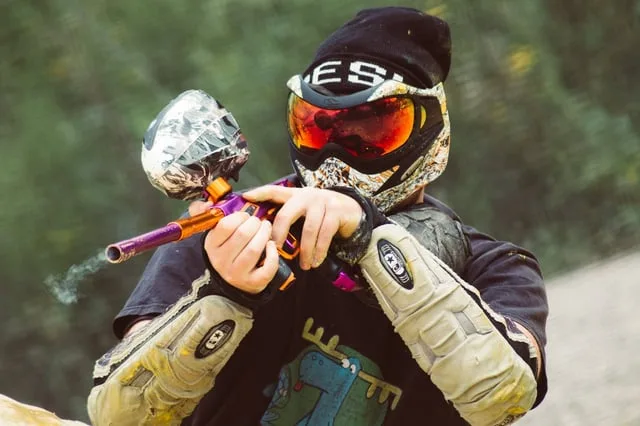Paintball: The Ultimate Recreation Hobby for Adventure Seekers
Paintball has evolved into a thrilling recreational activity that combines strategy, physical exertion, and fun into a dynamic sport. Whether you’re looking for a unique way to spend your weekend or seeking an adventurous hobby, paintball offers an exhilarating experience for participants of all ages. This article dives into the origins, essence, requirements, and financial aspects of engaging in paintball as a hobby.
When and Who Invented This Hobby
The inception of paintball can be traced back to the early 1980s when Charles Gaines, Hayes Noel, and Bob Gurnsey created the game in New Hampshire, USA, as a way for friends to simulate a survivalist competition in the woods. The first game, played in 1981, used air-powered markers originally designed for marking trees and livestock. This initial foray sparked a worldwide phenomenon, leading to the development of paintball into a structured sport complete with specialized equipment, professional teams, and international tournaments.
Since its humble beginnings, paintball has grown in popularity, evolving from a simple game to a competitive sport that tests team strategy, individual skill, and tactical thinking. The game’s evolution has been supported by advancements in technology and safety, making it accessible and enjoyable for a wide range of participants.
What Is the Point of This Game
At its core, paintball is a game of strategy and teamwork where players eliminate opponents by hitting them with dye-filled, breakable, oil and gelatin paintballs shot from a marker, commonly referred to as a paintball gun. Games can vary widely in objectives and formats, ranging from capture the flag to elimination, scenario-based games, and speedball matches, catering to different play styles and preferences.
The game’s objectives encourage physical fitness, quick thinking, and cooperative team play, making it a challenging yet rewarding experience. Players must navigate the field, seek cover, and make strategic decisions to outmaneuver their opponents, all while adhering to rules that emphasize fair play and safety.
Paintball’s appeal lies in its ability to simulate combat scenarios in a controlled environment, providing an adrenaline rush and a unique form of escapism. It’s a sport that rewards creativity, adaptability, and the willingness to engage in friendly competition.
What Is Needed for This Game
To play paintball, participants require basic equipment, including a paintball marker, paintballs, a mask, and appropriate clothing. The marker, or gun, is the primary tool used to shoot paintballs at opponents, powered by compressed air or CO2. Paintballs, the ammunition used in the game, are non-toxic, biodegradable, and come in various colors.
A safety mask is essential for protecting the eyes and face from paintballs, which can cause injury if proper protective gear is not worn. Masks designed for paintball are equipped with anti-fog lenses to maintain visibility during the game.
Players are advised to wear long sleeves, pants, and durable footwear to protect against the impact of paintballs and the natural terrain of most paintball fields. Additional protective gear, such as chest protectors and gloves, can provide extra safety and comfort.
For those looking to enhance their paintball experience, accessories like tactical vests, sights, and barrel upgrades can be added to a player’s setup. These optional items allow for customization and improvement of performance on the field.
Lastly, knowledge of the game’s rules, field layout, and safety procedures is crucial for all participants. Understanding these aspects ensures a fun and secure environment for everyone involved.
What You Need to Know Before Playing Paintball
Before diving into the world of paintball, it’s important for newcomers to familiarize themselves with the game’s basic rules and safety guidelines. This includes knowing how to operate the paintball marker safely, wearing protective gear at all times on the field, and respecting the referees and other players.
Additionally, understanding the various game formats and strategies can greatly enhance one’s enjoyment and performance in paintball. Participating in team briefings and learning from experienced players can provide valuable insights into effective gameplay tactics.

Advice for People Who Want to Start
For those interested in taking up paintball, starting with rental equipment at a local field is a practical and cost-effective way to get a feel for the game. This allows beginners to experience paintball without the initial investment in equipment. Engaging with the paintball community and participating in different game types can also help newcomers find their preferred style of play and meet like-minded individuals.
Additionally, prioritizing safety and sportsmanship above all ensures a positive experience for oneself and others. Embracing the learning process and gradually building skills through practice and open-mindedness will lead to a rewarding journey in the world of paintball.
How Expensive This Hobby Is
The cost of engaging in paintball as a hobby can vary widely depending on factors such as frequency of play, ownership of personal equipment, and participation in events or tournaments. Initial expenses include the cost of equipment rental or purchase, field fees, and paintballs. Regular players often invest in their own gear, which can range from moderately priced starter kits to high-end professional setups.
Ongoing costs include entry fees for fields, purchase of paintballs, and occasional maintenance or upgrades of equipment. Joining a local paintball club or team can also come with its own set of expenses but often provides benefits such as discounted rates and access to exclusive events.
Despite the potential costs, paintball offers a unique blend of physical activity, strategy, and social interaction that many find to be worth the investment. With options to rent equipment and a range of playing fields available, paintball can be accessible to those with varying budgets.





